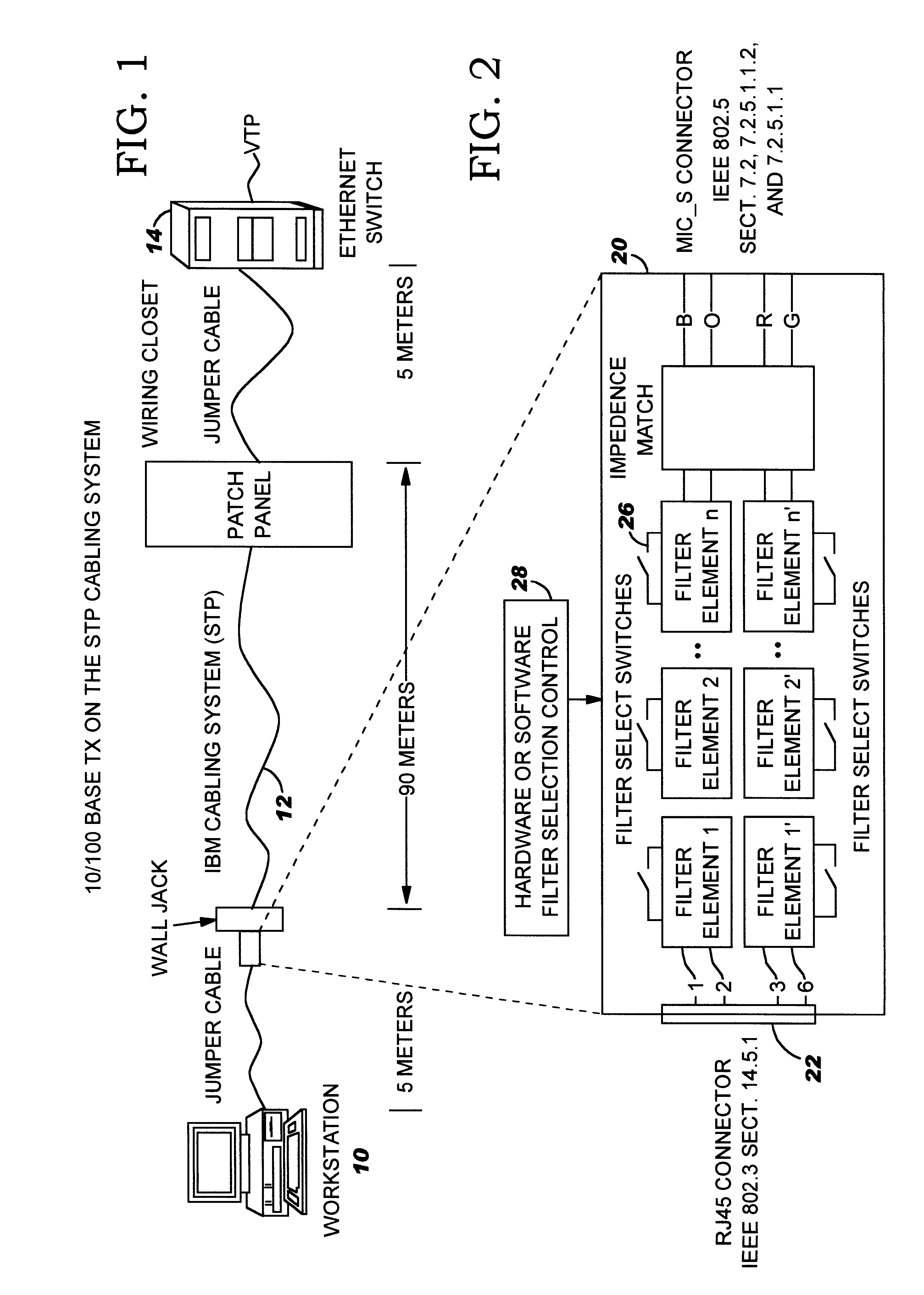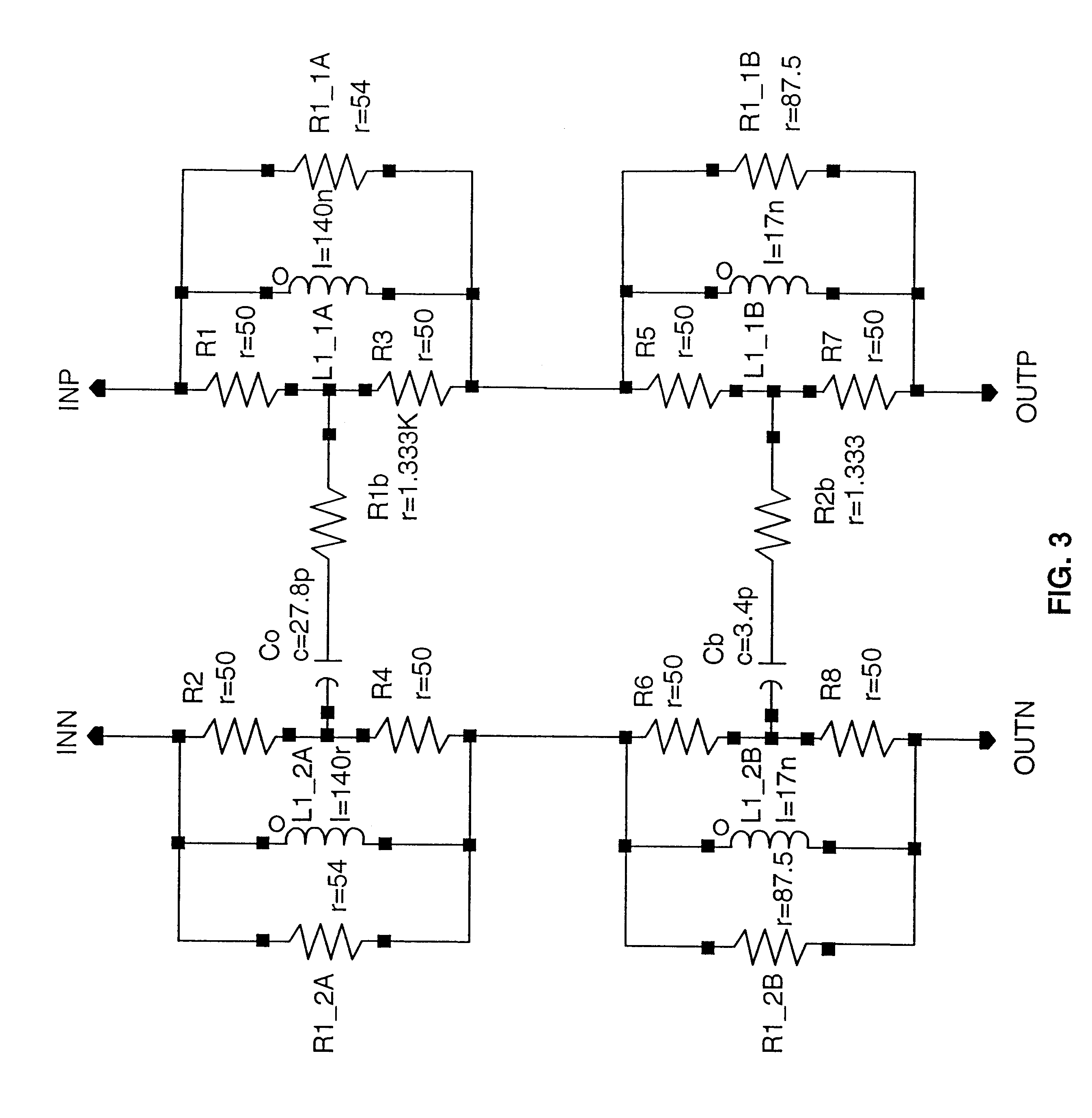Adaptive interface apparatus and method for data terminal elements in a communication network transmitting and receiving ethernet over a shielded twisted pair cabling system
a technology of data terminal elements and adaptive interfaces, applied in the field of interface apparatus and methods of communication networks, to achieve the effect of facilitating the connection of a workstation
- Summary
- Abstract
- Description
- Claims
- Application Information
AI Technical Summary
Benefits of technology
Problems solved by technology
Method used
Image
Examples
Embodiment Construction
In FIG. 1 a workstation or data terminal element 10 normally connected to a token ring network (not shown) through a Standard Twisted Pair (STP) cabling system 12 may also be connected through the STP cabling system and a switch 14 to an Ethernet installation (not shown) using Untwisted Pair (UTP) cabling. Normally the workstation 10 is within 5 meters of a standard RJ 45 telephone connector coupling the workstation to the token ring network in accordance with IEEE Standard 802.3, Section 14.5.1. Likewise, workstations coupled to the Ethernet installation employ a standard RJ 45 telephone connector but the pin out configuration for UTP cabling is different than the pin out configuration for the STP cabling system. Likewise, the characteristic impedance of the STP cabling system, which is 150 ohms, is different than the UTP cabling system, which is 100 ohms. Moreover, Ethernet transceivers have adaptive algorithms designed for equalization and attenuation settings for signal improvem...
PUM
 Login to View More
Login to View More Abstract
Description
Claims
Application Information
 Login to View More
Login to View More - R&D
- Intellectual Property
- Life Sciences
- Materials
- Tech Scout
- Unparalleled Data Quality
- Higher Quality Content
- 60% Fewer Hallucinations
Browse by: Latest US Patents, China's latest patents, Technical Efficacy Thesaurus, Application Domain, Technology Topic, Popular Technical Reports.
© 2025 PatSnap. All rights reserved.Legal|Privacy policy|Modern Slavery Act Transparency Statement|Sitemap|About US| Contact US: help@patsnap.com



